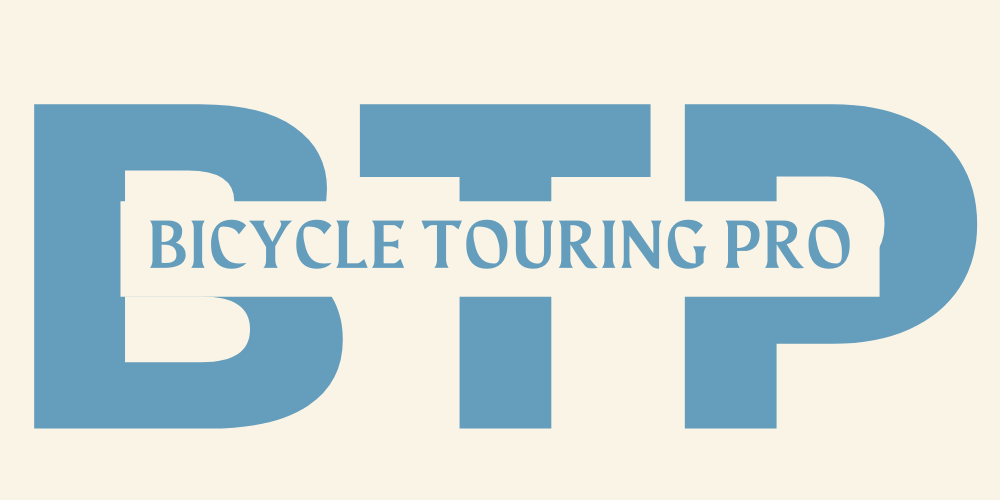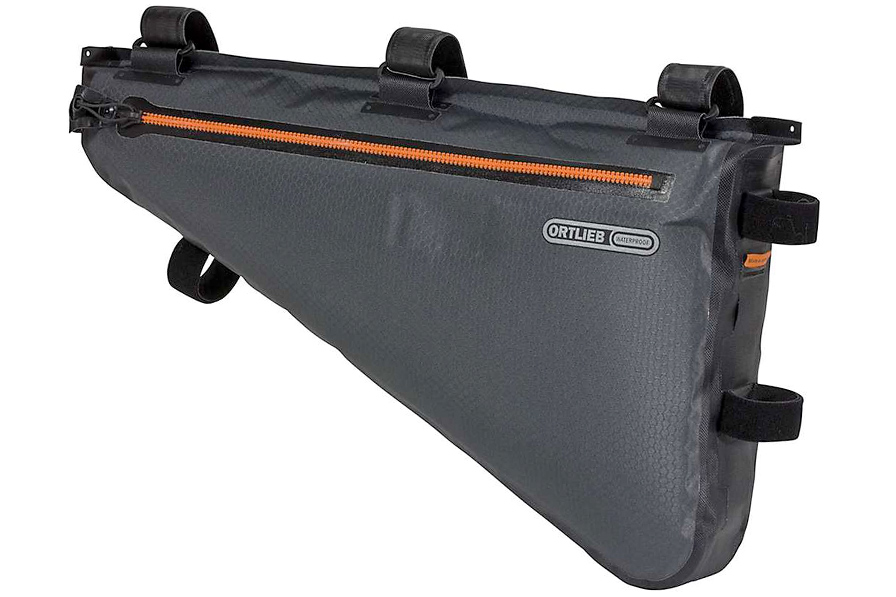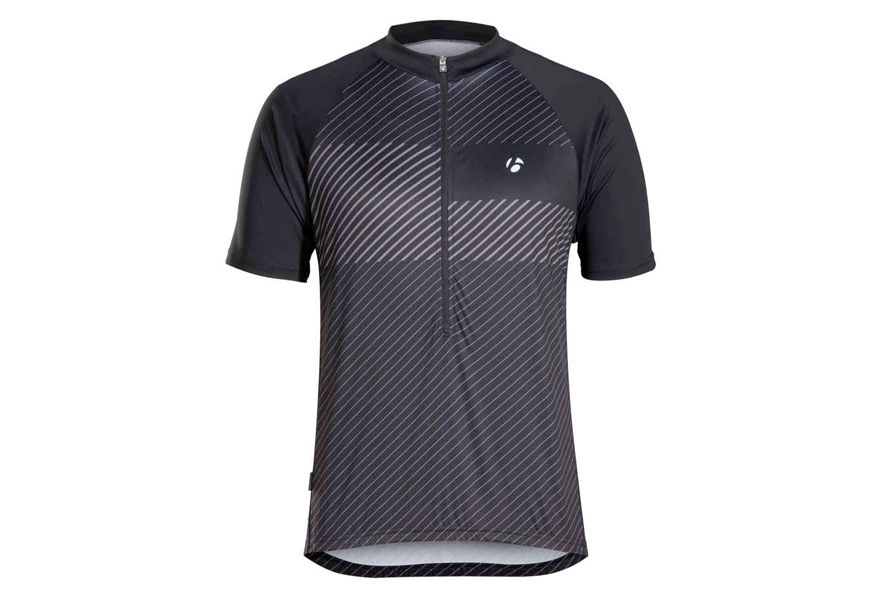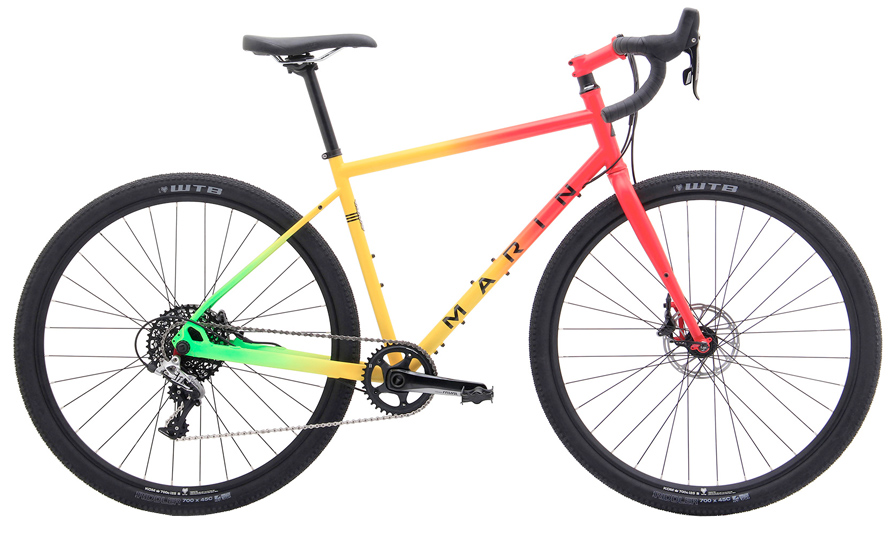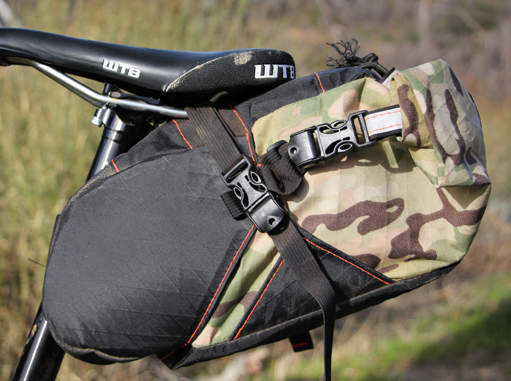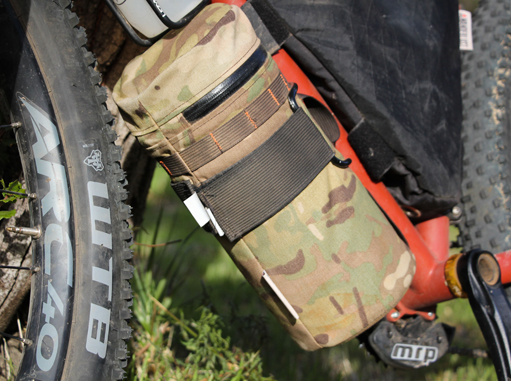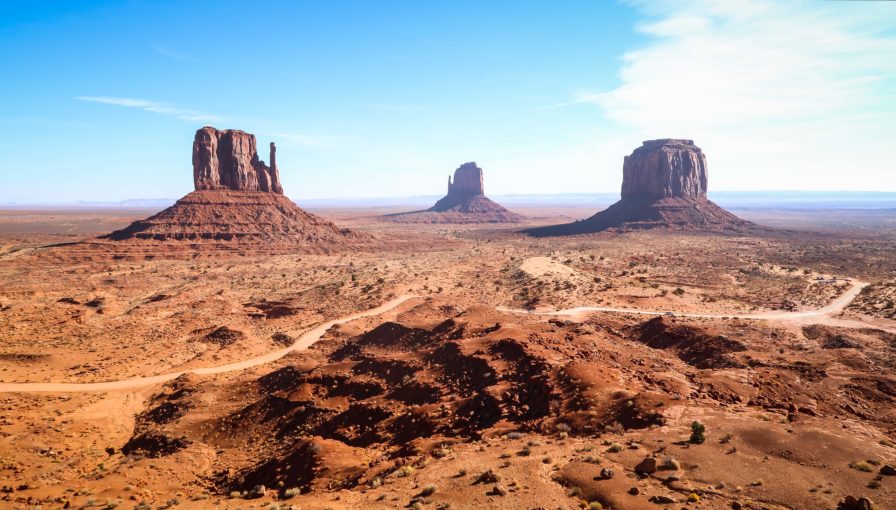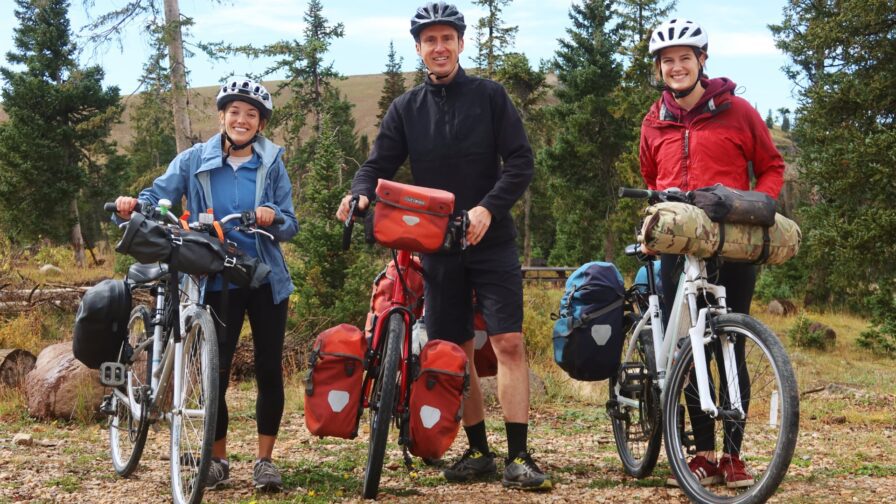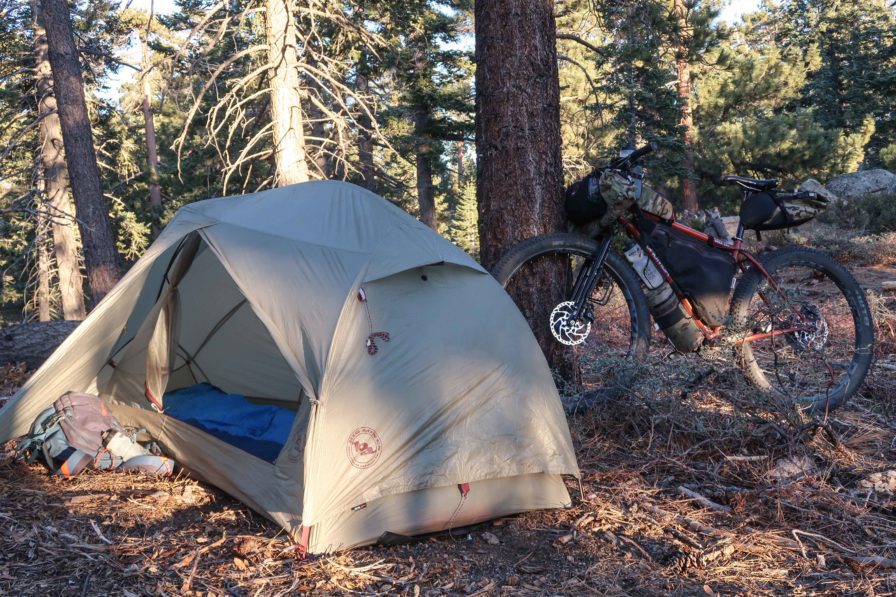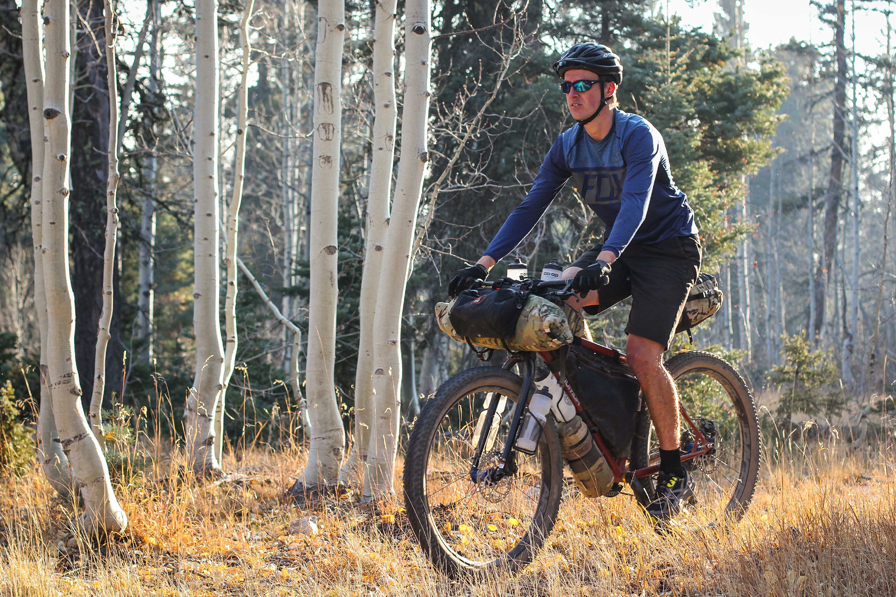
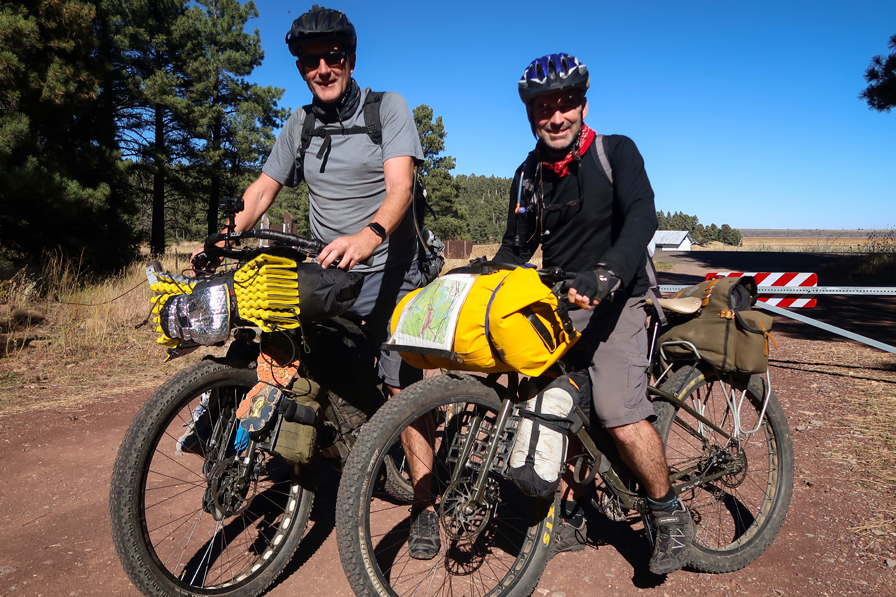

Bikepacking is an exciting new type of bicycle touring that combines the best of mountain biking with the basic principles of long-distance backpacking.
While traditional road-based bicycle touring consists of riding mostly on paved roads and bike paths, bikepacking consists of mostly off-road cycling on dirt or gravel roads and single-track trails.
While road cyclists usually carry their belongings in a trailer or a set of pannier bags attached to racks mounted on the front and rear frames of their bicycles, bikepackers carry their belongings in a series of small frame packs that are strapped or mounted to their bicycle’s handlebars, frame and/or fork. Packing in this way allows you to cycle over rough terrain without having your belongings bounce around or completely fall of your bicycle as you ride.
Bikepacking Gear List
Bikepacking is easy because you don’t need a whole lot to get started. All you need is a bicycle, a few basic bikepacking bags, some food and water, and a route that you intent to follow.
Here are the bikepacking essentials you need to have if you want to conduct a bike tour of your own:
The great thing about bikepacking is that you can use almost any type of bicycle. If you already have a mountain bike, then you likely already own a bicycle that’s good enough for bikepacking. However, there a number of different bicycles on the marketplace today that have been designed specifically with bikepacking in mind.
Bikepacking Bikes

That’s right! There are a whole range of bicycles designed specifically for bikepacking. While the size, shape and design of these bicycles can vary quite a bit, the thing that they have in common is that they are designed for off-road cycling, making these bikes comfortable to ride over long distances, allowing you to mount any necessary bikepacking bags, and at the same time carry a significant amount of water and/or gear.
These are just a few of the bicycles on the marketplace today that are being used for bikepacking adventures all around the world.
Bikepacking Bags
After you’ve picked out the bicycle you’re going to use for your bikepacking adventures, the next step is equipping your bike with the basic bikepacking bags you need for your travels.
If you’re new to bikepacking, it’s best to start out with just a handlebar bag and a seat bag. Then, if you need more space, add a frame bag to your bikepacking gear list. If you still need extra space to carry food, clothing, camping equipment or any other personal items you might be bringing with you, consider adding a top tube bag, or one or more accessory/stem bags.
Wanderlust Gear makes some excellent bikepacking bags that I highly recommend.
Daily Distances & Speed
Most bikepackers tend to cover anywhere from 25 to 75 miles (40 – 120 km) in a given day.
This distance is significantly shorter than what the typical road cyclists tends to cover because bikepacking is an off-road endeavor and cycling on dirt or gravel roads and trails usually mean cycling at a slower pace, as the riding is usually more technical.

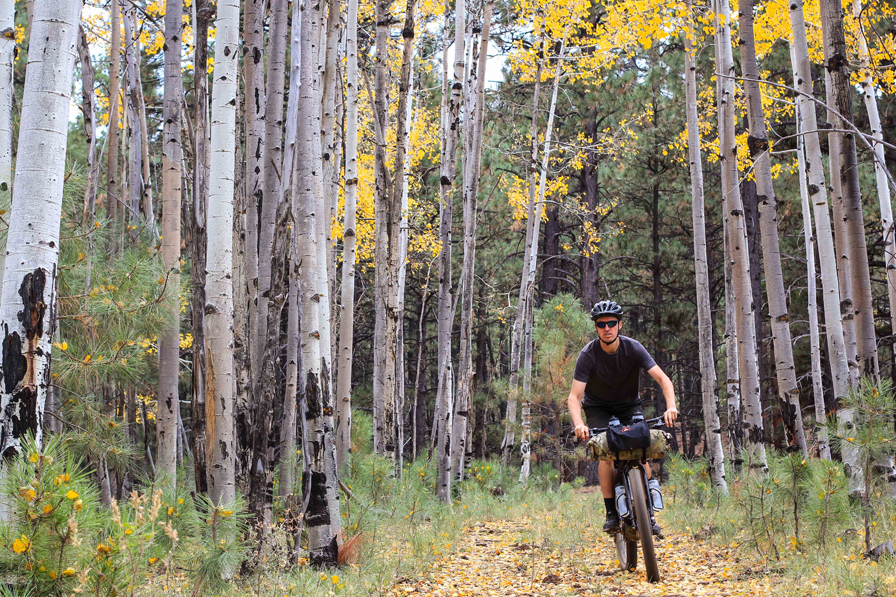
The speed at which you travel will depend on the topography, weather conditions, the bike you’re riding, the amount of gear you’re carrying, how you’re feeling on any given day, and a whole host of additional factors. However, most people conducting a road-based bike tour are able to cover, on average, approximately 8 miles (13 kilometers) per hour.
Therefore, you might expect a 50 mile (80 km) bike ride to take approximately 6-7 hours to complete.
Camping Techniques
Bikepacking is different than mountain biking because mountain biking is usually something that takes place over a short period of time in a 24-hour time perioud, whereas bikepacking is a multi-day activity that involves at least one or more nights of camping.
Because the goal of many bikepackers is to get into nature and cycle through areas that are far from human development, it makes camping is a great way to spend the evenings on a bikepacking adventure.
Most bikepackers participating in a multi-day trip will camp in one of the following four ways.
While a tent provides the most protection from the elements, a hammock, tarp or bivy are significantly lighter and less bulky, which makes them all very popular choices for a bikepacking trip of any length.
While every effort should be made to make your bikepacking setup as light as possible, please know that camping with the use of a hammock, tarp or bivy should only be done when the weather conditions allow for it.
Bikepacking Routes
Finding a good bikepacking route near your home or on the other side of country/planet has never been easier. There are tons of great resources on the Internet for finding the best bikepacking destinations.
The first place I recommend you check for the best bikepacking routes is Bikepacking.com.
Their bikepacking route map features dozens of excellent multi-day bikepacking routes all around the world. These rides range from short overnight cycling adventures to trips by bike that will take you several weeks or months to complete. On their website you will also find the downloadable GPS information you need to complete any specific bikepacking route, which will make navigating super easy when it comes time for you to finally hit the road.
Are You Ready To Go Bikepacking?
Thousands of people of all ages, incomes, and backgrounds go bikepacking each year… and you can be one of them!


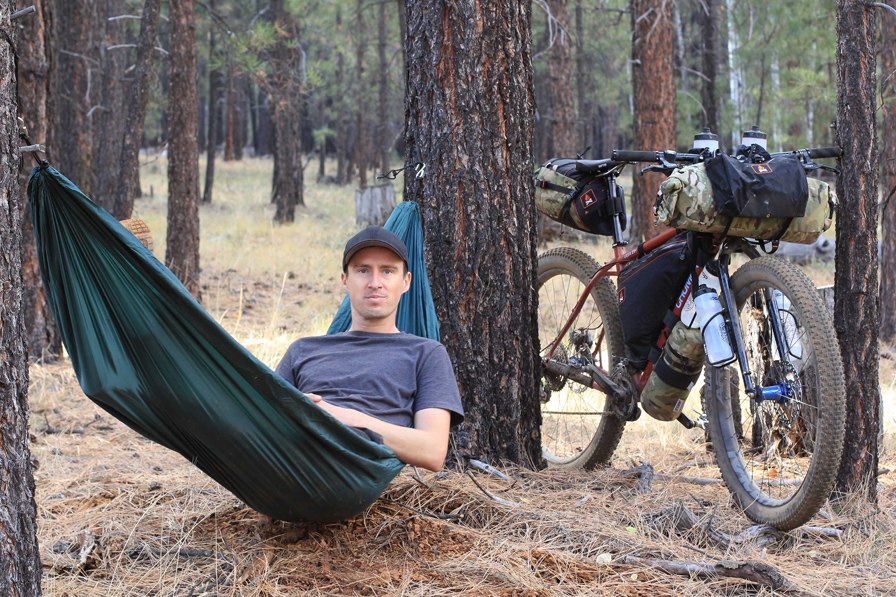
Bikepacking is an incredible means of experiencing the thrill of mountain biking, the rewards of long-distance bicycle touring, and the peacefulness of nature all at the same time.
If you’d like to learn more about bikepacking, bicycle touring, wild camping and all the other skills you need to possess to conduct a successful bicycle touring adventure, simply enter your name and email address in the form below and you will be sent my FREE bicycle touring starter guide.

When you enter your name and email here, you’ll also be automatically subscribed to Bicycle Touring Pro’s free email newsletter, where you will learn about the basics of bike travel, receive notifications about the latest videos, postcasts and content, and receive special offers, discounts, deals, and news… plus a whole lot more!
